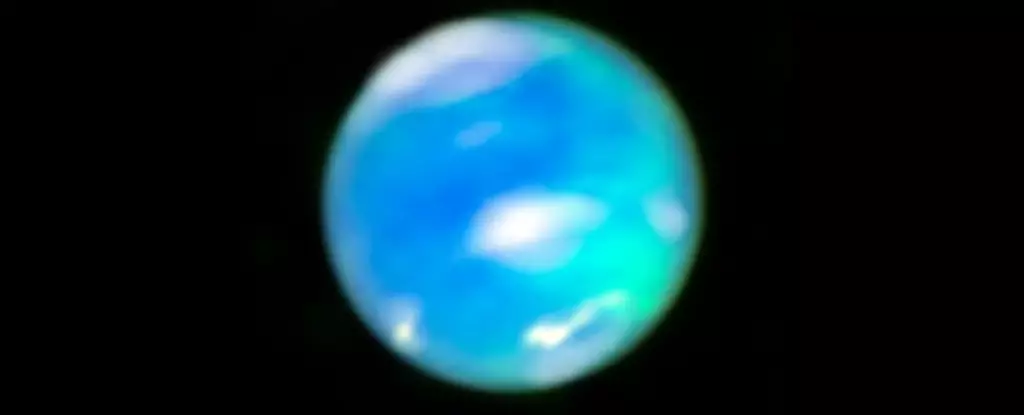For decades, the mysteries of our Solar System have beckoned scientists and sky-watchers alike. However, one phenomenon has remained particularly elusive: the auroras of Neptune. This enchanting event, which reveals itself only under specific conditions, has finally been unveiled in captivating light, thanks to the revolutionary capabilities of the James Webb Space Telescope (JWST). What was once a subject of speculation and debate is now substantiated with concrete observation. As a result, Neptune’s iridescent display adds a rich layer to our understanding of planetary atmospheres, magnetic fields, and their intricate interactions with solar winds.
The Science Behind Aurora Borealis
Most people are familiar with auroras on Earth, where particles from the Sun collide with our planet’s magnetic field, creating vibrant displays of green, yellow, and red hues lighting up polar skies. Yet, the auroras on other planets tell a more diverse story. Jupiter, with its fierce magnetic environment, produces the most intense and energetic auroras within our Solar System. Meanwhile, Saturn and Mars have their own unique characteristics, each providing insight into their atmospheric behaviors and solar interactions.
For Neptune—the far-off ice giant—auroras have historically been a point of intrigue. Scientists have speculated about the planet’s auroras for years, questioning whether such swirling displays existed at all. Now, armed with data from JWST’s near-infrared spectrometer, we are finally granted a glimpse of this outer planet’s atmospheric interactions, which mimic yet diverge from the auroras of its neighboring worlds.
A Breakthrough Using Advanced Technology
The JWST’s sensitive instrumentation has proved critical in capturing the essence of Neptune’s auroras. In 2023, astronomers utilized JWST to obtain detailed spectral data revealing the presence of the trihydrogen cation (H3+), a molecule typically associated with auroral activity. This finding was not merely a fluke; it provided a definitive map of where auroras cluster around this icy planet. This powerful new tool allows scientists to engage deeply with the nuanced nature of Neptune’s magnetic field, which is intriguingly unpredictable compared to Earth’s well-ordered structure.
Neptune’s auroras present themselves near the equator—an unexpected geographic twist—differing from the polar displays seen on Earth. This peculiarity stems from the irregular geometry of Neptune’s magnetic field, underscoring the importance of understanding magnetic configurations not just on our planet but across various celestial bodies.
Implications for Understanding Exoplanets
This discovery has profound implications that extend far beyond our immediate celestial neighborhood. Analyzing the dynamics of auroras on Neptune can offer insights pertinent to exoplanetary studies, particularly concerning worlds orbiting other stars. Understanding how solar particles interact with different planetary atmospheres enables scientists to predict potential habitability and atmospheric conditions on those distant planets. The variations of auroras across our Solar System paint a picture of elemental interaction that is both complex and beautiful.
As we refine our observational techniques and technological capabilities, the tantalizing information gained from Neptune can guide explorations into distant solar systems. The implications ripple outward, opening the floodgates for discoveries of auroras and atmospheric phenomena on exoplanets, further enriching our quest for extraterrestrial life.
More Questions than Answers
Though this groundbreaking observation marks a significant milestone, it also raises myriad questions about Neptune and similar planets. What can we learn about the evolution of planetary atmospheres through these auroral displays? How do varying magnetic field configurations influence atmospheric behavior? As we look deeper into the cosmos with our advanced sensors, Neptune serves as a beacon illuminating the complexities hidden in the vast abyss of space.
The hunt for auroras on remote worlds has only just begun. The unveiling of Neptune’s auroras invites a deeper commitment to planetary science, pushing us to probe further into the distant reaches of our Solar System and beyond. Each revelation paints a more intricate tapestry of cosmic phenomena, intertwining the fabric of our knowledge with every discovery that lies ahead.

